26 November 1896 in Chernihiv, the Chernihiv Historical Museum was officially opened in the building on the corner of Honchoa and Bulvarnaya streets. Actually, the celebrations did not take place on the occasion of the creation of the museum - it was the opening of the Chernihiv Provincial Scientific Archive Commission (WAIT UNTIL). The main task of this public organization was to identify and transfer documentary materials to the archives, important for the history of the region. However, archival commissions could investigate immovable monuments, conduct archaeological excavations, create museums. The citizens of Chernihiv took advantage of this opportunity, when in june 1895 decided to found CHAK, and the townspeople responded, bringing exhibits for the future museum. A museum collection began to form, the source of which was gifts of individual items and collections from private individuals and institutions (eg, exhibits were transferred to the museum from the archive of the provincial government, that remained after the Chernihiv Agricultural Exhibition 1883 year). After receiving permission to open the commission, artifacts began to arrive at the museum, received during earthworks and construction works on the territory of Dytynets, surveys of immovable monuments, later - also as a result of archaeological explorations, excavation, collecting expeditions, which were carried out by members of the commission.
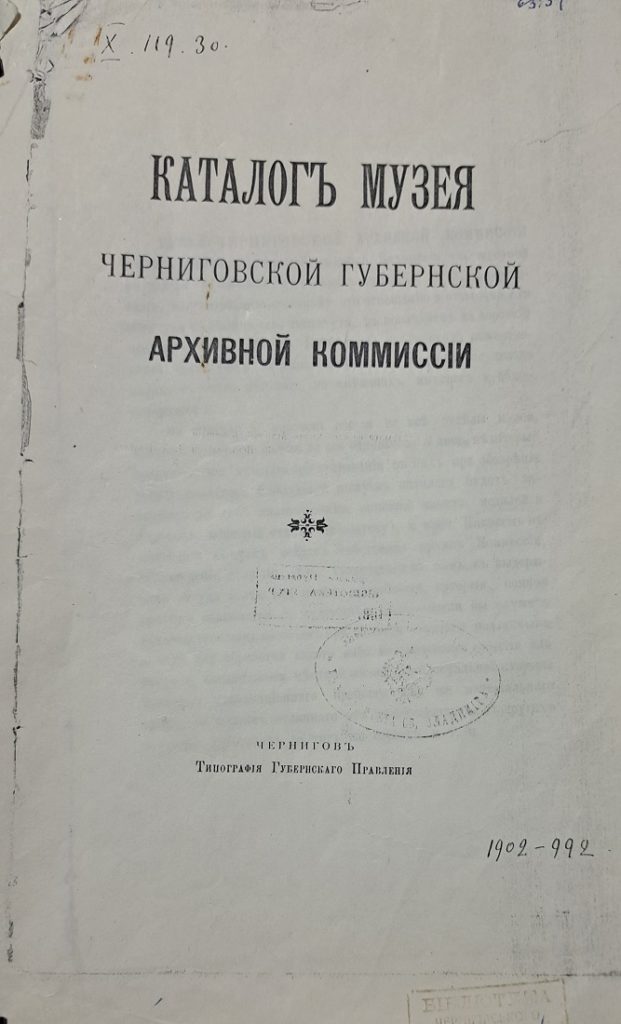
7 (19) November 1900 2008, the first catalog of the collection of its Historical Museum was presented at the meeting of the Central Committee, which was concluded by Pavlo Mykytovych Tykhanov. Museum items in the catalog have been grouped into the following sections: "Weapons and various military equipment" No. 1–50, "Portraits" No. 51–143, "Subjects of Christian worship (Icon, church utensils, clothing and other things)” № 144–188, "Department of Numismatics" No. 189–218, "Household items (in a broad sense)” № 219–271, "Seals" No. 272–306, "Autographs" No. 307–383 - in general 383 positions. Mostly, one subject is recorded under one number, but it happened - two or three, even - 16 arrowheads (everything 26 such undercounted exhibits). Even entire collections are recorded under one number: over 100 copper crosses, icons and symbols, donated by V.D.. Golitsyn, treasure from 50 Polish coins of Jan-Kazimir, знайдений у 1884 year on the estate of K.G. Bilenka in the town of Tarasha. In the section on numismatics, under numbers 189–217, only the country is indicated, and for Russia - the ruler, who minted coins, and specified, that this group contains Russian assignments and credit notes of the 18th–19th centuries. and ancient Greek coins. If you remember, that at the opening of the museum there was already approx 400 exhibits, and in 1897–1900 many donations came, among which are extremely valuable from the historical point of view and valuable from the material point of view, eg: award silver ladles of Sedniv centurion S. Butovych and chieftain of the Don army S. Efremov, at the time of publication of the catalog, more than two thousand monuments were already collected in the Historical Museum.
The prepared edition was by no means a catalog of the collection in our modern sense, rather, a guide for visitors to the museum. The author was aware of its flaws, about what I wrote in the introduction: "Not all departments of the museum are included in the proposed list, besides, not everything is described in the same way, and only some items for better orientation in them when inspecting the antiquities repository (i.e. museum expositions, L.L.)”. He planned to describe the coins later, tokens, книжки, documents, i.e. the entire collection of CHAK - and the museum, and the library, and the archive, and - it was not destined. Actually, his work P. Tykhanov called "The first issue of the catalog". Fairly blaming Pavel Mykytovych for the extreme lapidary nature of most of the descriptions, lack of information about the source of receipt of the exhibit, errors in attribution, his successors in some places suffered from the same shortcomings, although, безперечно, incomparably less. On the other hand, visitor 1916 year could not read, that are kept in the museum - nagaika of the Cossack leader S. Pourer and coil, знайдений у 1894 Dr.. with y. Derzhanivka, with a rather detailed description of it and an explanation of the symbolism, because in the catalog of the museum 1915 Dr.. they are not mentioned.
In the introduction to the catalog P. Tikhanov noted, that CHAK is a young institution and currently cannot boast of the completeness of at least one of its museum departments, and also - physical monuments of the region, but also that, which has already been collected, enough, so that people of science are sincerely grateful to its founders. But he expressed his wishes, for the average public to revise their view of the museum and treat it as an important scientific and educational institution. The last words are also relevant for us today.
Scientific Secretary музею
Lyudmila Linyuk

35. Sword in a gilded copper sheath, with the inscription “For courage“, belonging to General Kostenetsky. CHIM inv. No. I-2951.
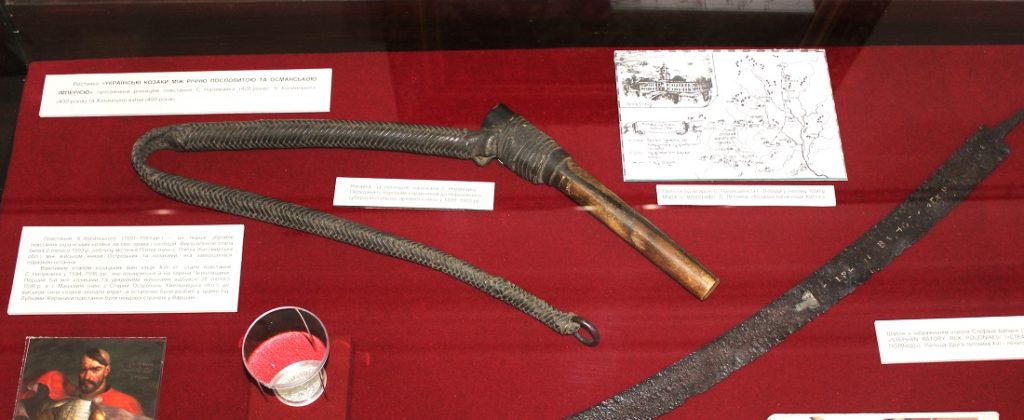
36. Hetman Nalivyko's whip. CHIM inv. No. I-3075.
37. Bronze round coil…, found in 1894, in the estate of Pashkovsky, Derzhanovka (Chernigov province, Kozeletska uyezd) … In 1820, a golden coil was found in the Chernigov province. CHIM inv. No. Arch-322.
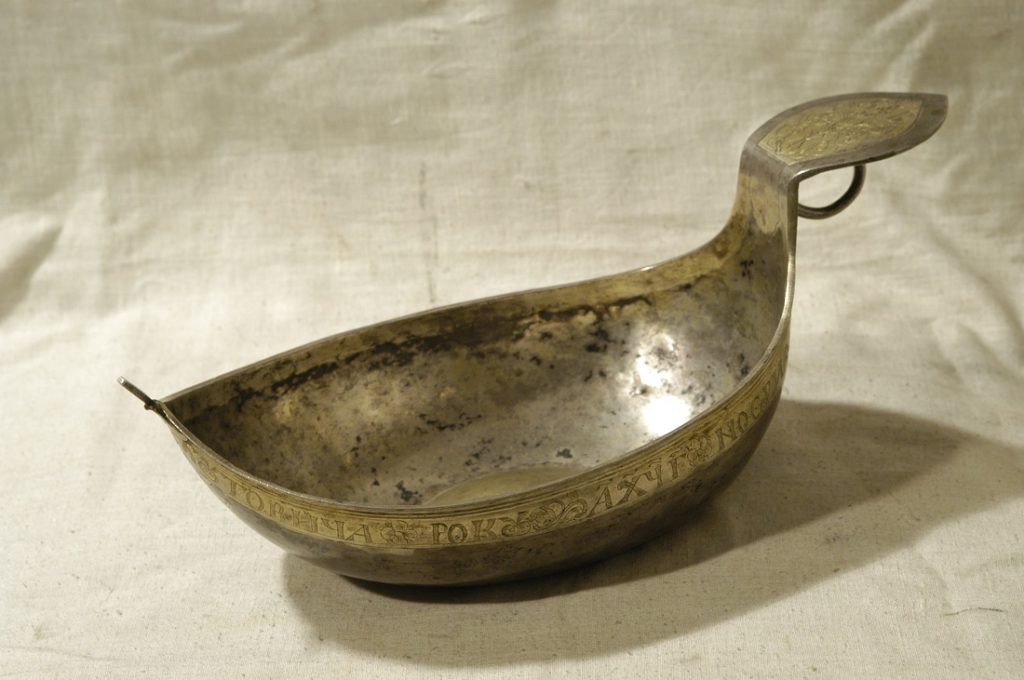
38. Silver ladle with gilding and a carved inscription along the edge: "This // bucket //Stefana // Ivanovich // Botovich // rock // ≠ахчг [1693] …”.
On the handle of the bucket carved gilded coat of arms… CHIM inv. No. I-3394.
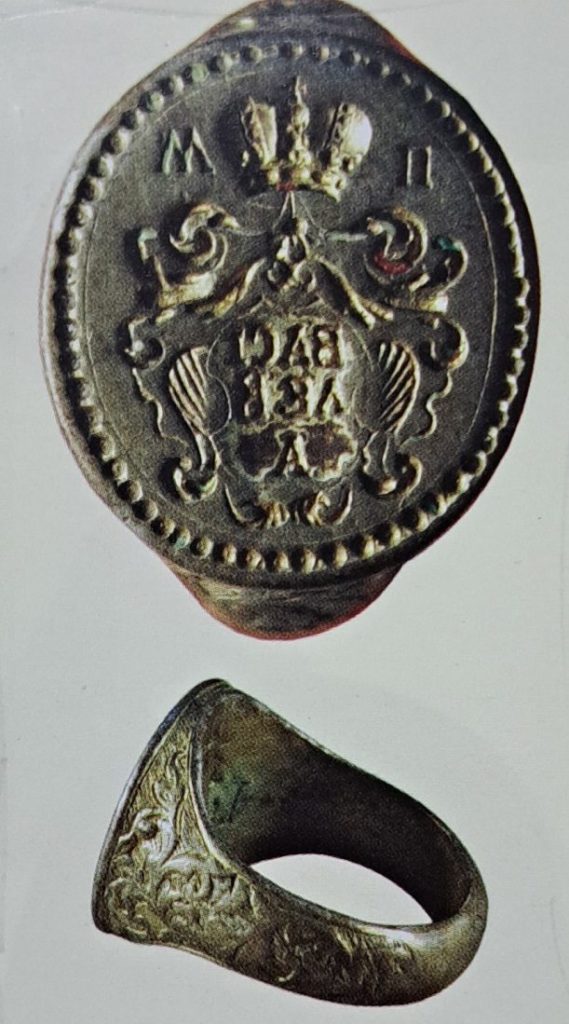
39. Silver signet ring, where he stands in the shield: “youand Leo a”, and on top on the sides of the crown: “P–M”. CHIM inv. № I-3261.
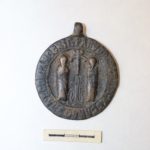
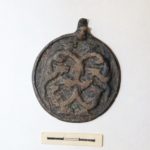
More Stories
Needed, perhaps, God's gift to create beautiful things from clay
Exhibition “In memory of cultural workers...”
Congregant of Metropolitan Peter Mohyla and Hetman Ivan Vyhovsky from the Baturyn Monastery